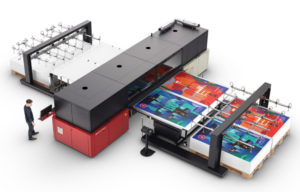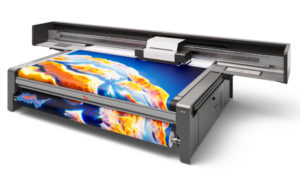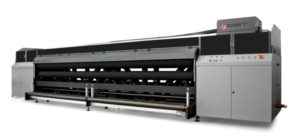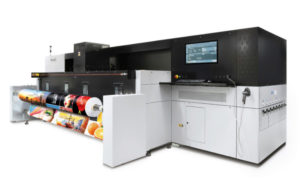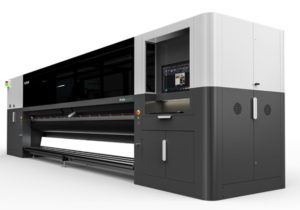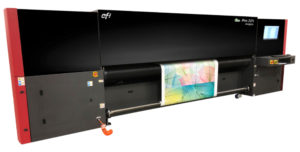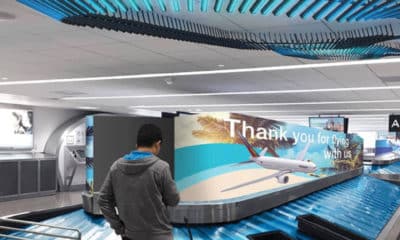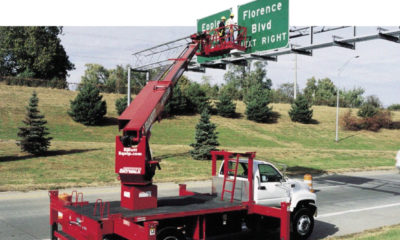EVERYBODY LOVES TO go fast. Fast cars, fast bikes, fast service, you name it. In the sign business, speed ranks right up there with quality and price. Rush jobs are just a fact of life and in a lot of cases jobs are lost because the delivery schedule can’t be met. People can be motivated to move faster, not slower, and overnight delivery services are almost the norm. In many cases the actual printer is the bottleneck in the process. If the printer can’t go faster with acceptable print quality, then what can you do?
The answer, like just about everything else in the world today, is to throw money at the problem. You can do this in a couple of ways, like buying more printers. Need to go twice as fast, get the same printer. Of course you now need more floor space and will have to carry a couple of service contracts. Another solution is to buy a faster printer. You will be looking at big bucks (over six figures) but it can definitely help to increase the productivity in your shop.
What does high speed even mean? It can be a tricky question that depends on a few factors (not the least of which is perception). The technology can have an impact. UV printers that image rigid materials are generally slower than roll-to-roll printers. They tend to require more manual intervention loading/unloading boards. You also have to be aware of how a given machine attains its top speed. In most cases, a draft low-resolution mode or lower number of print passes will provide the highest speeds. The question then becomes, is the print quality something the customer will accept? To get a good print, the machine may have to run at half or lower than the top-rated speed. That could be just fine but don’t be blinded by the published top-speed numbers. You also need to see if the printer uses a dual CMYK configuration to get the best speeds at the expense of a higher color gamut or spot colors, such as white.
Advertisement
 In the past, speed tended to compromise print quality, but today’s high-speed printers can produce large, photo-realistic signs quickly and easily.
In the past, speed tended to compromise print quality, but today’s high-speed printers can produce large, photo-realistic signs quickly and easily.
So, with those caveats in mind, what can you expect on the market today? A higher-end, production-level eco-sol, UV or latex printer can usually print around 500 to 1,000 sq. ft./hr. at their fastest speeds. When you move up to the Ferraris of printers you can go from around 2,000 to 7,000 sq. ft./hr. That significant jump in speed might make the difference between getting a job or losing it based on time.
You may ask, “Do you sacrifice anything to get those kinds of speeds?” In the past, fast machines were set up mostly for jobs like billboards. Low resolution with large dot sizes allowed for fast printing but the images only looked good from a distance. Many of today’s speed demons can produce print quality that rivals photographs, at supersonic speeds. Many of the machines will allow you to run two or three media rooms at the same time, further increasing efficiency. Virtually all of the manufacturers of high-speed flatbed UV printers offer optional loading and unloading machines that practically eliminate human intervention.
Printer speeds have truly come a long way. If you have the need for high-speed printing, be it roll-to-roll or rigid media, you can most likely find a solution. Be sure to use the speed of standard-quality images as a baseline for the true (read: production) speed. If you need a race car to meet production needs, you have a lot to choose from.
PHOTO GALLERY (6 IMAGES)
Advertisement


 Tip Sheet2 weeks ago
Tip Sheet2 weeks ago
 Photo Gallery4 days ago
Photo Gallery4 days ago
 Ask Signs of the Times6 days ago
Ask Signs of the Times6 days ago
 Real Deal2 weeks ago
Real Deal2 weeks ago
 Paula Fargo1 day ago
Paula Fargo1 day ago
 Benchmarks1 week ago
Benchmarks1 week ago
 Photo Gallery1 day ago
Photo Gallery1 day ago
 Women in Signs2 weeks ago
Women in Signs2 weeks ago
 In the past, speed tended to compromise print quality, but today’s high-speed printers can produce large, photo-realistic signs quickly and easily.
In the past, speed tended to compromise print quality, but today’s high-speed printers can produce large, photo-realistic signs quickly and easily. 